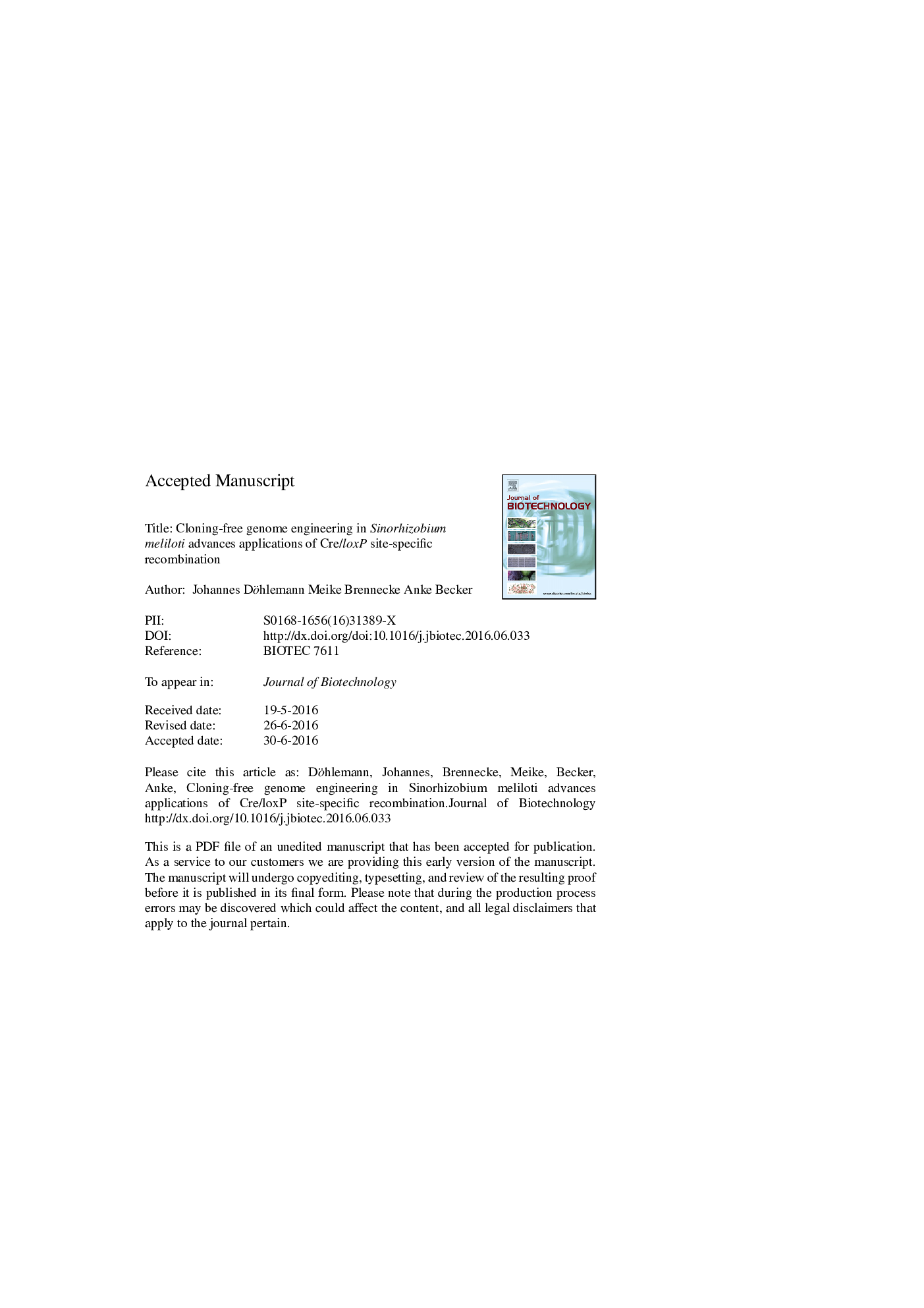| Article ID | Journal | Published Year | Pages | File Type |
|---|---|---|---|---|
| 6490492 | Journal of Biotechnology | 2016 | 34 Pages |
Abstract
The soil-dwelling α-proteobacterium Sinorhizobium meliloti serves as model for studies of symbiotic nitrogen fixation, a highly important process in sustainable agriculture. Here, we report advancements of the genetic toolbox accelerating genome editing in S. meliloti. The hsdMSR operon encodes a type-I restriction-modification (R-M) system. Transformation of S. meliloti is counteracted by the restriction endonuclease HsdR degrading DNA which lacks the appropriate methylation pattern. We provide a stable S. meliloti hsdR deletion mutant showing enhanced transformation with Escherichia coli-derived plasmid DNA and demonstrate that using an E. coli plasmid donor, expressing S. meliloti methyl transferase genes, is an alternative strategy of increasing the transformation efficiency of S. meliloti. Furthermore, we devise a novel cloning-free genome editing (CFGE) method for S. meliloti, Agrobacterium tumefaciens and Xanthomonas campestris, and demonstrate the applicability of this method for intricate applications of the Cre/lox recombination system in S. meliloti. An enhanced Cre/lox system, allowing for serial deletions of large genomic regions, was established. An assay of lox spacer mutants identified a set of lox sites mediating specific recombination. The availability of several non-promiscuous Cre recognition sites enables simultaneous specific Cre/lox recombination events. CFGE combined with Cre/lox recombination is put forward as powerful approach for targeted genome editing, involving serial steps of manipulation to expedite the genetic accessibility of S. meliloti as chassis.
Related Topics
Physical Sciences and Engineering
Chemical Engineering
Bioengineering
Authors
Johannes Döhlemann, Meike Brennecke, Anke Becker,
